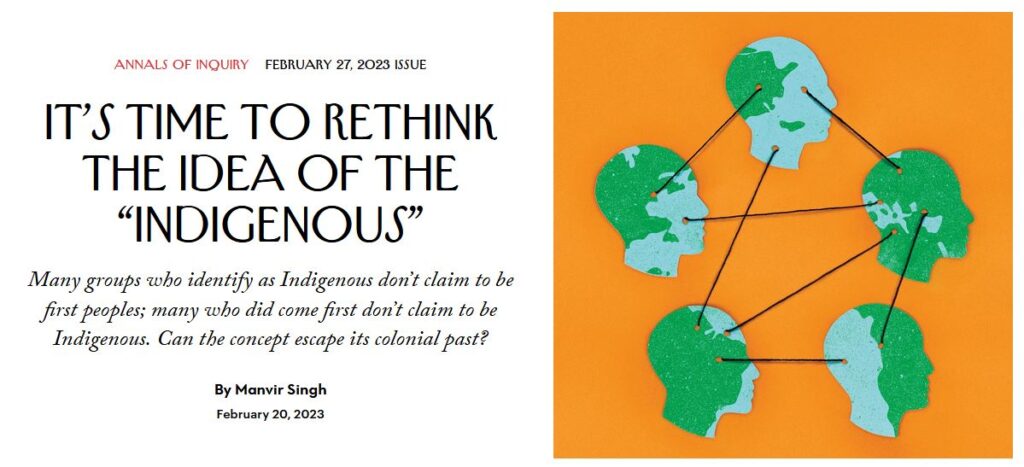
The Idea of the Indigenous People
The Idea of the Indigenous People
Yet many peoples who are now considered Indigenous don’t claim to be aboriginal—the Maasai among them. According to Maasai oral histories, their ancestors arrived in Tanzania several hundred years ago from a homeland they call Kerio, likely situated near South Sudan.
A handful of Gaelic monks and then the Vikings were the first people to arrive in Iceland (they settled there earlier than the Maori arrived in New Zealand), yet their descendants, the Icelanders, are rarely touted as Indigenous. Farther east, modern-day Scandinavians can trace most of their ancestry to migrations occurring in 4000 and in 2500 B.C., but it’s the Sami reindeer herders, whose Siberian ancestors arrived in Scandinavia closer to 1500 B.C., who get an annual entry in the “Indigenous World” yearbook.
On any form that asks, I identify as native American because I was born here. Most racial and ethnic identities aren’t coherent enough to be used for anything important. Do Native Americans, what we used to call Indians, have any more right than I do, to say they were always here? No, I was born here, and presumably, so were they. Of course their ancestors go back farther, but go back far enough, and we are all from some region in Africa.
When eggheads call a group “indigenous”, they mean something like a noble savage. That’s no way to run a country.
Elon Musk is an African-American. He’s from Africa and now he is an American. Genetic sites like “23 and Me” find that African-Americans have 30% white blood. So, someone like Barack Obama, with a white mom and black dad, may very well have more white DNA than black DNA. So what? Who cares?
We can screen everyone to determine just how much privilege they should receive, or we can treat everyone like a person.